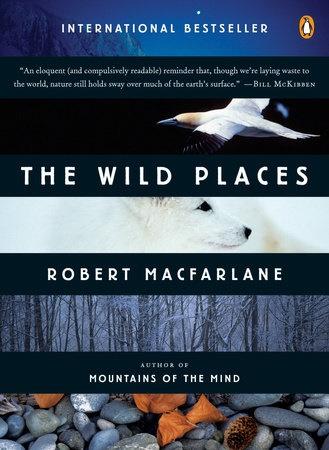Recommended Read – The Wild Places by Robert MacFarlane

“The curse declared that Sweeney would be transformed into ‘a creature of the air’ and could live only in the wild places of Ireland and western Scotland. Like a wandering bird – a peregrine – he would have to shun human company, and to seek out remoteness wherever it could be found”.
-The Wild Places by Robert MacFarlane. 2007, Granta Books
Our movements may be restricted but books about journeys are still allowing our minds to wander to places we have never been. Robert MacFarlane’s travels in search of “The Wild Places” begin in a beechwood near his Cambridge home. Climbing one of the beech trees for a bird-eye view of the landscape below, he reflects that “anyone who lives in a city will know the feeling of having been there too long”. He feels the need to be somewhere remote, somewhere ‘wild’, where “the evidence of human presence was minimal or absent”. He asks if wildness, in this sense, can be said to exist in present day Britain or Ireland.
His journeys take him to Ynys Enlli off the coast of Wales in the footsteps of early Christian monks, to the “vast and trackless” Rannoch Moor in Scotland and to Coille Dubh, (Black Wood) a remnant of a prehistoric forest where he shelters beneath a storm-felled birch tree as the snow falls. MacFarlane climbs the bare and cold summit of Ben Hope in winter and attempts to spend the night there. In Ireland, he observes the “tiny groves of ferns, mosses and flowers” that grow in the Burren. On a shingle peninsula in Suffolk, he finds an arrowhead and wonders what other hands had touched it in the thousands of years since it was made.
MacFarlane’s wanderings take him back to the beechwood near his home where he reassesses his notion of a wild place as somewhere remote and outside of history. While awed by the “fierce elementality” of Ben Hope and Rannoch Moor, he had come to appreciate another type of wildness - “the weed thrusting through a crack in the pavement, the tree root impudently cracking a carapace of tarmac”. These “wild signs” point to a future when “the sand will drift into our business parks… Our roads will lapse into the land”.
As you would expect from a keen observer of the natural world, Robert MacFarlane’s journeys in The Wild Places are beautifully described. Which places have you been reading about over the last months? Are there particular journeys you are looking forward to making? Have memories of favourite places brought you comfort? Have restrictions on travel given you a new appreciation of your immediate environment and brought things to your attention that you hadn’t noticed before?
Orla, Fingal Libraries